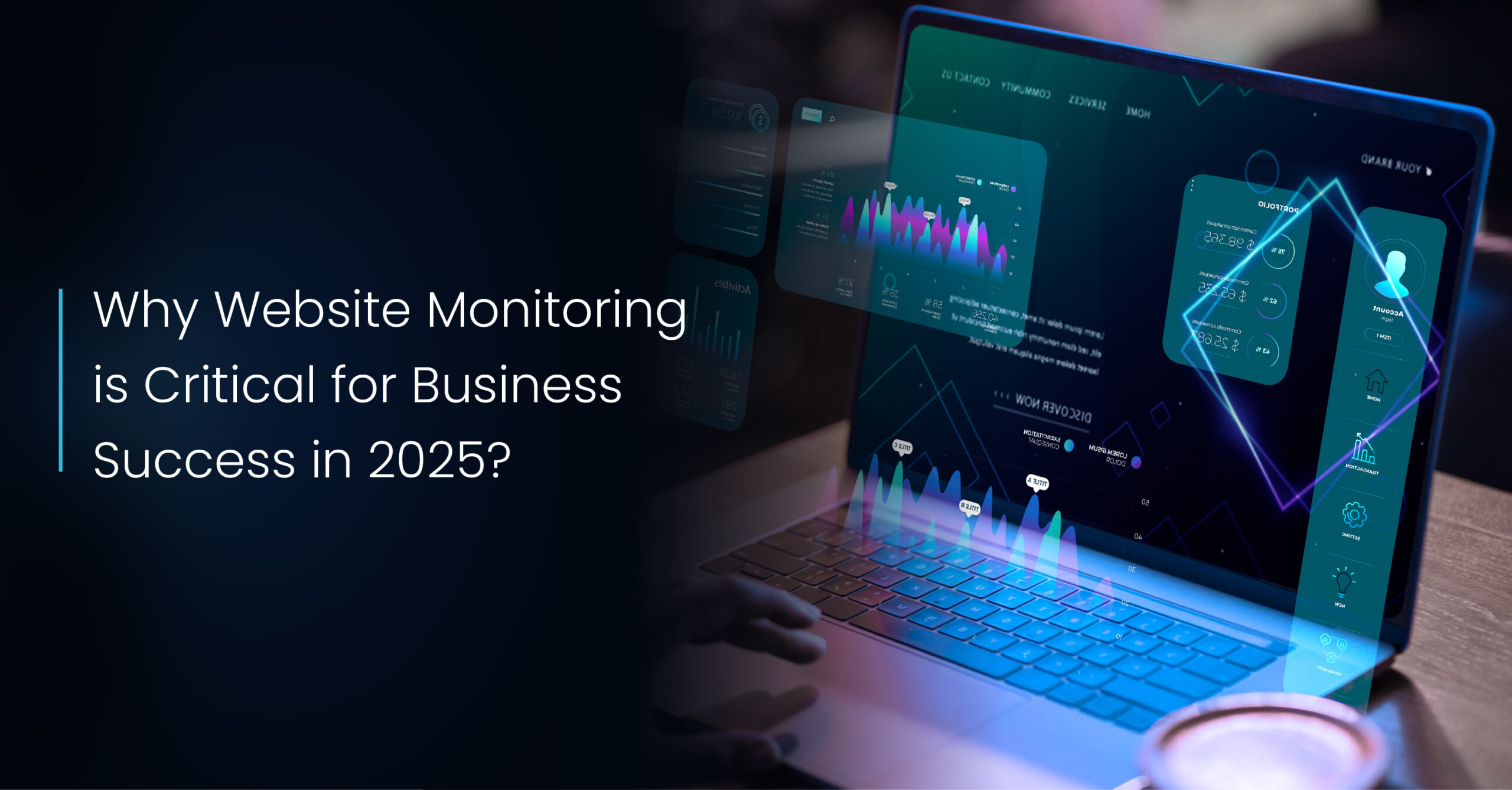In 2026, one online store lost 14% of its weekend sales because a simple 500 error slipped through the cracks. That’s painful alone, but security lapses can be much worse. Large companies have lost tens of millions overnight, paid costly regulatory fines, and seen their hard-won reputations destroyed by a hack.
Cyber threats aren’t what they once were. Phishers now operate industrial phishing scams; leverage newly discovered zero-day vulnerabilities and utilize tiers of attack methods to circumvent defenses.
What is the cost of data breaches around the world? Around $4.45 million on average. Smaller businesses often take an even harder hit, simply because they don’t have the same security resources as larger firms.
That’s why reactive measures aren’t enough anymore. Websites need real-time monitoring that can flag issues early and shut them down fast. Think of it like an immune system for your business – it’s always on guard, spotting and neutralizing threats before they cause severe damage.
The Threat Landscape: Understanding the Target
The first rule of strong defense? Understand who – and what – you’re fighting. Hackers use a mix of old tricks and cutting-vulnerabilities addling for its own strategy to spot and stop the threat.
Malware isn’t going away:
Viruses, ransomware, and trojans still sneak into systems to steal data. What’s worse, some modern malware can hide quietly for months before striking. That’s why constant, careful monitoring is essential. The right tools can flag warning signs early – like strange file changes, unauthorized code injections, or unusual server behavior.
Phishing scams are getting craftier:
Attackers now design fake pages that look completely legitimate to trick people into sharing personal information. Many impersonate real websites, and some even hijack them to display bogus content or lead visitors to malicious sites. Making a point of visiting and reviewing your site’s content regularly can help keep you on the lookout for unauthorized edits before they ensnare your customers.
DDoS attacks overwhelm sites with junk traffic:
When a flood of bogus requests makes your website unusable for real users, business comes to a halt. Today’s DDoS campaigns can push over a terabit of garbage traffic at their targets. Real-time traffic monitoring lets you see and react to sudden spikes before your site goes down.
SQL Injection and Cross-Site Scripting (XSS) target your data:
Hackers tamper with user input to break into the web applications that underlie sites and access a database filled with personal information. Monitoring tools can pick up on early warning signs – such as strange database queries or weird code execution – so you can act quickly.
Brute-force attacks keep hammering away:
This low-tech method repeatedly guesses passwords for admin panels, logins, or APIs until it lands the right one. It’s simple, but if your security is weak, it can work. Watching login activity in real time helps you detect and block these attacks before they succeed.
The Role of Proactive Monitoring
Cybersecurity works best when it’s proactive, not just reactive. Instead of waiting for an attack to happen, website monitoring acts like an early warning system – constantly watching every corner of your web environment for weaknesses, suspicious behavior, and active threats.
Uptime and Performance Monitoring:
do more than confirming your site is live. They can uncover early warning signs of trouble. Unexplained downtime or sluggish performance might point to a DDoS attack, a compromised server, or another security issue. Modern monitoring isn’t just checking for “is my site up or down” and looking at response times, resource usage, and traffic flows.
A sudden spike in your CPU usage with unexplained network activity can be a sign that there’s hidden crypto-mining malware in the process of working.
Regular Vulnerability:
scanning is another method for closing doors before an attacker has the opportunity to open them. They search for known risks, like old software, lax configurations, or open ports.
Automatic tools look for CVE-listed vulnerabilities, security headers that aren’t included, or issues with SSL. Having these scans running regularly means you can spot and resolve new problems shortly after they appear – long before a cybercriminal can exploit them.
Real-time Traffic Analysis:
distinguishes between legitimate visitors and bad ones. Sophisticated monitoring solutions examine traffic moves, browser signatures, locations, behaviors, and patterns.
Machine learning can identify bots, scrapers, and coordinated attack behavior that might go undetected. Sometimes, it can even identify suspicious reconnaissance activity before a high-profile breach attempt begins.
However, as AI-generated content becomes more prevalent across websites, distinguishing between legitimate AI-assisted content and malicious automated content requires sophisticated detection methods. Tools like AI humanizers are being developed to make AI-generated content more natural, which presents both opportunities and challenges for security monitoring systems.
Similarly, cybersecurity professionals often use visual tools such as an AI presentation maker to clearly illustrate these complex AI behaviors and threat detection processes du sessions.
Content and Change Monitoring:
acts as a watchdog for your site’s trustworthiness. It looks for unauthorized edits, changes to files that aren’t normal, and interference with site options.
If attackers do manage to break in and insert back doors or malicious code, the system sends alerts immediately. You can quickly roll back any dubious changes with version control and maintain your site’s security.
Real-Time Alerts and Incident Response:
In security, speed is everything. The more quickly you learn about an attack and take action, the greater your likelihood of stopping it before it escalates into a major breach.
Instant notifications keep your team in the loop. It’s also possible that they receive a ‘ping’ across multiple channels (email, text, Slack, or mobile push) as this information comes up, so that they are guaranteed to receive these updates wherever they are and whenever they need them. Through smart prioritization, our solutions remove the noise, surfacing what truly matters and decreasing alert fatigue.
Automation buys you precious seconds. Today’s sophisticated systems can act independently, without waiting for human input. That could be blocking a malicious IP, deleting infected files, stopping questionable programs, or altering firewall rules on the fly. IPS: IPS systems will actively prevent threats from attacking your system, whereas IDS reports the threats. That difference matters – automation can stop an attack within seconds of detection, often before it causes any damage.
A strong incident response plan combines it all. Alerts are only helpful if your team knows the precise thing they need to do next. And a good plan, with steps to escalate, a communication tree, forensics, and recovery playbooks. Integrations with ticketing platforms let you follow along and compile the moves to make sure nothing slips through the cracks.
Identifying threats faster, automating the first line of defense, and having a clear action plan can significantly reduce response times and contain damage – effectively staying a step ahead of your opponent.
Beyond Detection: Post-Attack Analysis and Long-Term Prevention
Web monitoring isn’t just about spotting threats in real time. If played correctly, it offers your team a 360-degree perspective on how it can shore up and better prepare for the future. Bringing daily operational data into the mix with incident analysis will help organizations make better choices for risk management and long-term planning.
Log analysis turns raw data into valuable insight:
After an incident, security teams dig into monitoring logs to piece together what happened. This “autopsy” helps track down how attackers broke in, where defenses fell, which systems or data were compromised, and how to prevent similar efforts going forward. More advanced log analysis tools might use machine learning to identify subtle patterns that may suggest new attack vectors or threats whose popularity is rising.
Continuous improvement is where monitoring pays off:
Cybersecurity isn’t a one-and-done checklist – it’s an ongoing process. Insights from monitoring shape policies, guide patching priorities, and help design better employee training programs.
Regular reviews of attack attempts and common vulnerabilities reveal trends that lead to smarter investments and stronger defenses. Instead of guessing about risks, decisions are based on real data from actual incidents.
SSL/TLS certificate monitoring protects trust and performance:
These secure links are built on a strong security identifier and use strong encryption. When a certificate expires or is not installed correctly, user data can be at risk, browser trust warnings can appear, and search rankings can decline.
Automated monitoring checks certificate health and expiration time and detects certificates with leaked or rogue entries before they become an issue.
Compliance and audit support made it simpler:
Monitoring data also makes it easier to show that your organization is in compliance with security and privacy regulations. Detailed logs that offer audit-ready logs to meet regulatory requirements such as GDPR, PCI-DSS, and HIPAA.
With ongoing monitoring, preparing for and filing the appropriate taxes doesn’t have to be a nightmare come auditing time – you maintain compliance year-round, effectively minimizing risk and costly fines.
Conclusion
Cybersecurity never sleeps, and neither must your defenses. Today, website monitoring is about much more than just verifying that a website is up. It’s a full security layer that integrates real-time threat detection, automated responses, and actionable insights.
With today’s monitoring, organizations don’t have to “think” about these things. The protection features of uptime checks, vulnerability scanning, traffic analysis, and content monitoring are integrated, creating several layers of security designed to detect and halt attacks before they can do any real damage.
Proactive monitoring is not “nice to have” anymore – it’s necessary. Companies that invest in such tools can detect risk earlier, respond quicker, and constantly measure how effective their defenses are holding up.
As the nature and number of cyberattacks continue to increase in complexity, companies that view monitoring as a fundamental component of their infrastructure will be in a much better position to protect digital assets, gain customer confidence, and ensure that operations run well. Those who treat it as less than serious do so at their peril in an ever-more-dangerous digital world.
FAQs:
An IDS is kind of like a security camera – it watches for unusual behavior and alerts your team, but it can’t act on its own. An IPS goes a step further. It’s in the business of blocking or neutralizing threats – in real time, as both a lookout and a first responder.
Around the clock. Today’s security monitoring is 24/7, real-time scanning for threats. Robotic programs can scan for security holes every few minutes, and more in-depth security audits should take place on a schedule – quarterly for high-risk businesses and at a minimum annually for lower-risk sites.
Beware of unexpected periods of inactivity or sluggish performance, unexplained spikes in traffic, unauthorized changes to the content on your site, unexpected pop-ups or redirects, strange files being added to your server, browser security warnings, or activity in your site database or admin that is out of character. Any of these can be indications that a breach or “an active attack is occurring.
Yes. There are tools for every level (including free or browser-based tools) for monitoring traffic and testing performance. According to security experts, you don’t have to spend a great deal maintaining vigilance; even the cheapest monitoring beats the cost of dealing with a successful attack. It is always cheaper to invest in protection upfront than it is to do cleanup afterwards.
WAF protects and filters your web apps. It looks for generic exploits like SQL Injection and XSS and shuts them down before they reach your site. Many WAFs also come pre-configured to block malicious requests by default (though some, like openresty, require you to enable this behavior explicitly). It’s a critical component in the security and sustainability of web applications.





